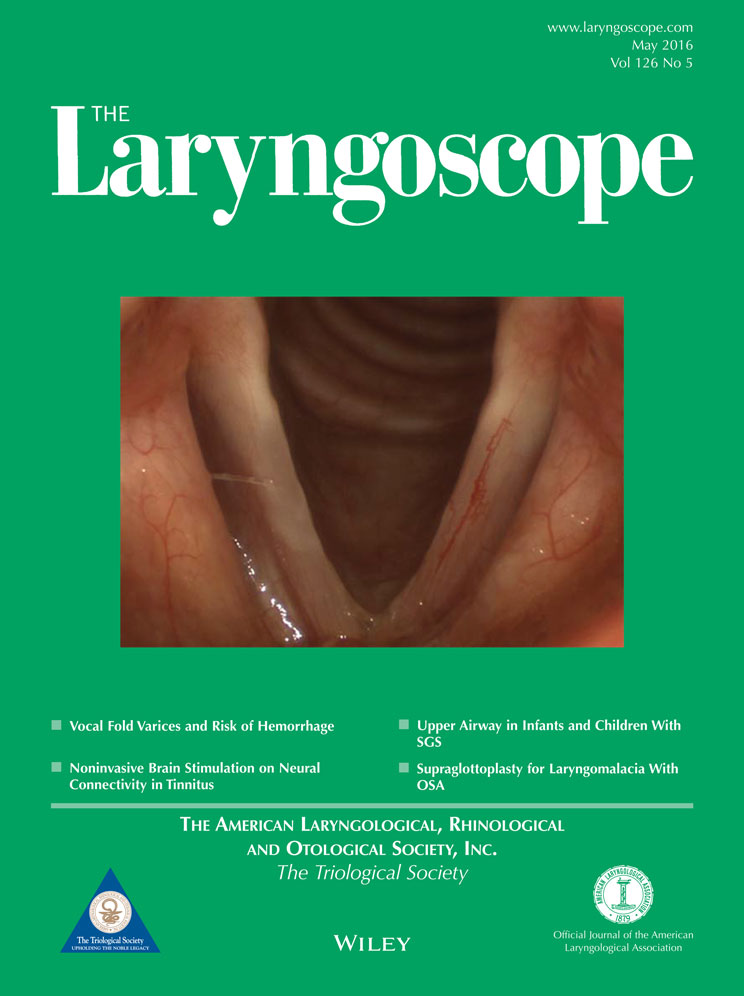Clinical relevance of quality of life in laryngomalacia
The authors have no funding, financial relationships, or conflicts of interest to disclose.
Abstract
Objectives/Hypothesis
To examine aspects of laryngomalacia and correlate findings with quality of life (QOL).
Study Design
Prospective cross-sectional study.
Methods
Seventy-two patients with laryngomalacia were examined; the mean age was 8.8 weeks. Parents answered questions from the Infant and Toddler Quality of Life Questionnaire–47 (ITQOL-SF47). Fiberoptic laryngoscopy and endoscopic examination of swallowing (FEES) were performed. The presence of laryngomalacia-associated characteristics and swallowing status were recorded. Patient age, sex, presence of reflux, clinical severity, anatomical findings, and swallowing results were evaluated through logistic regression. Independent sample t tests were used to compare responses on the ITQOL-SF47. Overall laryngomalacia ITQOL-SF47 scores were compared to the scores of a large healthy sample population.
Results
Forty-three (60%) patients had mild laryngomalacia, and 61 (85%) patients had findings suggesting gastroesophageal reflux disease. The most common abnormality was shortened aryepiglottic folds. Ten patients failed FEES. Patients with moderate laryngomalacia (χ2 = 7.62; P = .006) or prolapsing cuneiforms (χ2 = 4.79; P = .029) were more likely to fail FEES. Laryngomalacia severity impacted parental perception of their child's health (P < .05). Parents of children who demonstrated aspiration or penetration reported significant emotional impact (mean = 56.9; t = 2.74; P = .008). The mean ITQOL-SF47 scores of patients were significantly lower in certain sections than the reported general sample population.
Conclusions
Epiglottal prolapse correlated with severity of laryngomalacia and cuneiform prolapse with swallowing dysfunction. Perceptions of worsening health and physical ability were related to severity of disease. Swallowing dysfunction had a significant emotional impact on parental daily life. Infants with laryngomalacia have a lower QOL
Level of Evidence
3 Laryngoscope, 126:1232–1235, 2016




